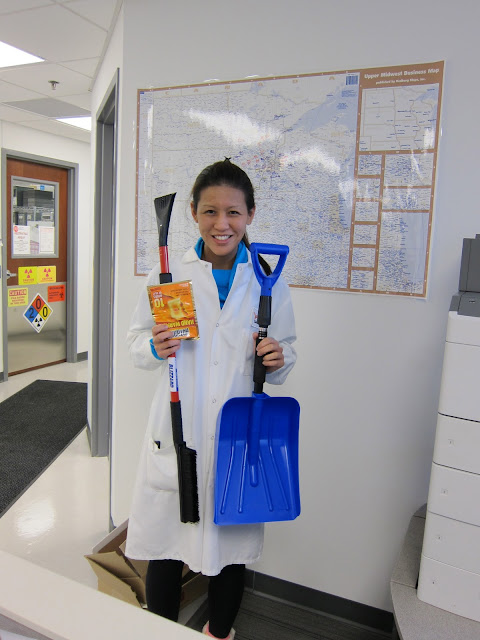If you are not aware of the field I work in professionally, this is where you can learn more. I have separated the blog space between my personal and my working life for those who are more interested in my field of work. In the nuclear world, the use of the word "hot" is essentially our slang version of referring to anything that is radioactive-- and it can be a contamination of an area or item to anything that is radioactive. Hence, the title of this blog space. Please, read this at your own discretion, it's all about my work, you might be bored if you don't like nerdy, scientific stuff:)
An example of what "hot" means-- at work, we get called out by our coworkers if you get something contaminated. "Hey Sarah, pigs were hot." If you have sloppy techniques, you can easily get everything you use radioactive, a.k.a hot. Contaminating the area means that you are exposing yourself and others to radioactivity, and nobody wants that. And once you contaminated your gloves, you can easily wipe and transfer them off to other items you get your hands on. Something that is "hot" isn't always a bad thing; it could be a negative if it's a contamination or a description if the area or item is known to be and supposed to be radioactive.
Unfortunately, you cannot see contamination through the naked eye. One of the ways to find out the location of any contamination is by using a Geiger Mueller Survey Meter.
 |
| Geiger Mueller Pancake Meter |
Any contamination you find whether it's on your body, an item, or a surface area, you will find that the GM meter will "scream."-- Think of it as an annoying alarm clock beeping at you.
I have just come to the end of three weeks as a working professional. It sure feels strange now that I have to grow up and be responsible. I miss being an irresponsible student and having my parents take care of everything and anything. Now I don't even get to eat my mother's home-cook meals three times a day! MM...homey, cozy meals sound so yummy right now.
On another note, somewhat work related, relocation is such a challenging thing! I have come to realize why so many people cannot just get up and move for a job! First of all, I have been having so much difficulty communicating with CA State Board of Pharmacy in transferring all my pharmacist intern hours to MN State Board of Pharmacy. Because everything is by snail mail, it makes everything that much more difficult having to send written requests for anything you need.
Unofficially, I am a nuclear pharmacist. Officially, I am only a pharmacist intern! I still have to take the MN MPJE, which is the state law portion to become licensed as a pharmacist in Minnesota. I feel like I have not stopped studying since I was 10 years old.
Next week, my fat three-inch binder full of Authorized User training material will be mailed from corporate. Anyone who is interested to become a nuclear pharmacist or nuclear technician needs to go through an AU course and become licensed. In order to qualify to take the course, you will need 500 hours working in a nuclear pharmacy setting. After the 500 hours, you can enroll in a course that costs on average of $8,000, finally finishing up with a 200 hour didactic course. Fortunately, Cardinal Health will be covering my training costs and I will be in Dublin, OH for three weeks my final training in April, 2012:)
Yes, I will be studying and training to become a nuclear pharmacist. If you're wondering, pharmacy schools do not prepare you to become a nuclear pharmacist. There are only a couple schools in the U.S. that offers nuclear pharmacy in their pharmacy program. Essentially, I have learned a lot in my 4 years of graduate school but not sufficient to be a pro in nuclear pharmacy.
Hopefully, I will be able to open the pharmacy by myself by May, 2012!
 |
| PET Nuclear Pharmacy Technician: Brandon McRoberts |
I will have to learn how to use the robotic hands to manipulate drawing FDG doses eventually. No, I won't be working with this on a daily basis because I handle traditional nuclear pharmacy drugs and not PET pharmacy drugs. You will find out that there are two sectors to nuclear pharmacy-- traditional vs. PET. And no, I don't work with cancer chemotherapy drugs. 95% of the drugs we compound are for imaging purposes-- heart, lung, bone, liver, kidney scans and more. The rest are therapy doses ie thyroid treatment.
Ok- I can go on and on probably. This is good for now.
Tata!
Sarah






